Australia is a nuclear nation. So why is there a ban on clean energy?
What I learned on my atomic tour of Oz
A tiny radioactive capsule went missing in Australia last week. This isn’t, however, the argument against nuclear energy that people think it is, because Australia doesn’t have nuclear energy. The radioactive capsule was lost during routine transport from a mine site and has since been recovered. Capsules like these are commonly used in the mining, oil, and gas industries, and there are thousands of them in Australia.
But news stories like this help to fuel the fear against anything nuclear-related, and the media had a field day with this story, focusing on health risks and likening the search to ‘finding a needle in a haystack,’ The capsule was in fact found rapidly, and using exceptional nuclear science.
That’s not to downplay the risk, but nothing is risk-free. Accidents involving energy production are common: think the Deepwater Horizon spill, the Jharia Coalfield fires, and the Banqiao Dam failure. Yet only one of the safest forms of energy is currently prohibited in Australia under the Environmental Protection and Biodiversity Conservation Act.
Public debate in the 1980s and 90s was flamed by the anti-nuclear movement around the world, and at the time, the need for nuclear seemed low, as cheap energy was abundant thanks to coal.
Now, as Australia aims to close seven of its sixteen coal-fired power stations by 2035, there is a need to replace baseload generation. Additionally, the state of Queensland is planning to phase out its coal-fired power stations in favour of renewable hubs, with the aim to source 70% of its energy needs from renewables by 2032 and 80% by 2035. Where will Queensland get its baseload power? Nowhere in the world has a large-scale grid been able to decarbonise without large amounts of either hydropower or nuclear energy.
That’s not for lack of trying, and significant lessons can be learned from other countries. Germany failed to transition to 100% renewables without significant access to hydropower and after the closure of nuclear power plants. Politicians there spent €160 billion on renewables, only to end up needing to reopen coal-fired power stations because they neglected baseload power needs. Lack of baseload generation at home is now taking a heavy toll on manufacturing in Germany and may cripple their economy. To bridge the energy gap, Germany decided to extend the lives of their remaining three nuclear power plants, but only until April this year. Germany has been phasing out its nuclear power plants since 2011 and relying instead on renewables and fossil fuels.
That’s what happens when politicians put ideology above data.
A divided topic
While Federal Energy and Climate Change Minister Chris Bowen politicises the issue and makes fun of people who support nuclear energy, South Australian Premier and leader of the South Australian Branch of the Australian Labor Party Peter Malinauskas has restarted the nuclear debate. Malinauskas points out that the pending construction of nuclear-powered submarines under the AUKUS pact has already put nuclear back on the table, and calls for the topic to be debated with “an evidence-based discussion” rather than “polarised debate that has been consumed by the culture wars.” Prime Minister Anthony Albanese disagreed with Malinauskas’s stance, saying that he will not change his mind and citing waste and economics as reasons not to reconsider nuclear energy in Australia.
When I announced that I was going on a speaking tour in Australia, there were more opportunities to speak there than I could fit in during my trip, but there were also some ominous warnings. An Australian millionaire with financial interests in renewables didn’t like that I was touring and encouraged his many followers on social media to tell me that I wasn’t welcome in Australia.
Therefore, I expected a much cooler reception on arrival in Sydney than I received. Instead, I was met by warm and welcoming people who taught me the local lingo and took me to eat sushi, to stunning beaches, and even to see fruit bats. I spoke on university campuses, to conservative groups, and climate groups. I debated a professor who agreed on many points about nuclear (but ultimately wanted to bet on 100% renewables anyway) and spoke on a panel alongside Daniel Kinchela, Indigenous senior man and lorekeeper, who was concerned about land use without permission and human rights problems involving solar panel manufacturing in China. “We wouldn’t want that on our land,” he told the panel gravely.
I spoke to students, parents, retired energy enthusiasts, politicians, and anti-nuclear activists. I spoke to the political left and the right. I implored the left to look at the data and see that renewables can’t do it alone and that nuclear energy isn’t the bogeyman they think it is. To the political right, I suggested that they put other differences aside and find ways to encourage the Labor Party that is in power to support nuclear energy since the future of their country depends on it. I also pointed out that in their many years in power, Scott Morrison’s Liberal Party government did not lift the ban on nuclear energy - in fact the previous Prime Minister played down the need for it. Politicians from all Parties have failed to stand up for nuclear in Australia.
Now the coal industry speaks of a ‘transition’ on the horizon to make ‘clean coal’. But why bank on non-existent technologies and experiments when nuclear fission already provides the world with so much clean energy?
Is Australia really anti-nuclear?
Of all the highly industrialised countries in the world, Australia is the only one with a ban on nuclear.
Nevertheless, Australia is globally respected for its nuclear scientists and experts as well as its regulatory and scientific bodies such as the world-leading nuclear scientific body ANSTO (Australian Nuclear Science & Technology Organisation) and ARPANSA (the Australian Radiation Protection and Nuclear Safety Agency).
ANSTO is widely recognised as an international player in the field of nuclear science and technology and is a major contributor to nuclear medical science and a supplier of life-saving medical isotopes. ANSTO operates Australia’s only nuclear reactor, the Open Pool Australian Light-water (OPAL) reactor - one of the most advanced reactors in the world. ANSTO was opened by the late Labor Prime Minister, Bob Hawke, marking the dawn of a new era for Australian science.
Australia also has the world’s largest reserves of uranium, and is the third largest uranium exporter in the world, which it exports to other countries.
It’s hard to imagine a more nuclear nation.
Which begs the question: why does a world-leading nuclear science nation have a ban on building nuclear reactors for its own energy needs?
Just as has happened in other countries, years of scaremongering has misled the Australian public and politicians. The anti-nuclear movement in Australia gained traction against a backdrop of French nuclear testing in the Pacific, the Rainbow Warrior incident, the debate on creating a nuclear waste repository for medical and industrial nuclear waste, and leaked plans to site international nuclear waste in Australia. So-called environmental groups like Friends of the Earth campaigned heavily to misinform Australians about nuclear energy. Pop culture has played its part, with films like The China Syndrome stoking people’s fears and constant anti-nuclear messaging in The Simpsons - a show that has had a significant cultural impact in Australia. Now, financially vested interests lobby heavily against lifting the ban on nuclear energy, even when they know that their push for renewables will result in continued dependence on coal.
The coal industry has also played a significant role.
Anti-nuclear campaign from the early 2000s. Funded by the coal industry
Once accepted, ideology is difficult to shift. Much of what people believe about wedge issues like nuclear energy is received wisdom: in line with what their peers believe and accepted without question. The discussion has become heavily polarised, with antis arguing that nuclear energy is ‘right wing’, to make it a tribal issue based on identity. I have outlined the history of political support and rejection of nuclear energy in Britain to illustrate that the political left has more consistently supported nuclear than the right for decades. Democracies like Sweden and Finland have nuclear also power. Political polarisation along Party lines is fake news.
Meanwhile, something that it would be logical for Australians to fear is accepted with little resistance. Sixteen Australian coal-fired power stations continue to pollute the country’s air, which has significant health impacts on the population. A 2020 report found:
Much of Australia’s population is in the grip of an air pollution crisis caused by emissions from coal-burning power stations. [D]ue to this toxic pollution, hundreds of Australians die every year, and even more suffer from other severe health impacts throughout their lives. We estimate that each year, air pollution from coal-burning power stations is responsible for 800 premature deaths, 850 cases of low birth weight in newborns and 14,000 asthma attacks in children and young adults aged 5-19.
The death toll is eight times greater than the average annual casualty number from all natural disasters combined, and still twice as high as the exceptionally high number of deaths in the recent 2019/2020 bushfire season attributed to smoke inhalation.
What about the waste?
I spoke with radio presenter Steve Austin of ABC Radio Brisbane about the need for nuclear energy in Australia and the benefits it can bring. A caller raised concerns about nuclear waste; a common concern about nuclear energy stirred up by years of misinformation from anti-nuclear activists. I pointed out that radioactive medical waste is already currently stored at over 100 sites around Australia, from medical facilities involving nuclear medicine. There have been ongoing protests over where to store this waste. Ironically, these protests are preventing the safe storage of nuclear waste by not allowing the government to follow the international scientific consensus on how to manage it correctly.
Australians are worried about nuclear waste, which is highly regulated and well-managed around the world, while breathing in waste from coal-fired power stations that harms human health and kills people.
What do Australians think?
The tide is certainly turning: a 2022 poll of Australians found that climate change is a ‘serious and pressing problem,’ and 52% of Australians would support removing the existing ban on nuclear power, which is a five-point increase from 2021. As people learn the truth about clean energy, they are less likely to oppose it.
Dr Robert Barr and Robert Parker of Nuclear for Climate Australia have analysed the economics and viability of adding nuclear to the grid in Australia to assess whether nuclear plants would be well-suited to former coal plant sites.
Parker has also spoken to people in the Latrobe Valley (where Australia’s Victorian coal plants are) and found that they would support a changeover to nuclear power plants. Producing electricity has sustained the economy in Latrobe Valley for many decades. There will be few jobs, and even fewer well paid jobs, left when the coal plants shut down.
“The tragedy being played out in the Latrobe Valley and places like the Hunter region of New South Wales is the trashing of the creativity and intellect of Australia’s skilled trades,” Parker tells me. “It is gut-wrenching to sit across the table from coal plant workers and hear the tales of real skills being thrown on the scrap heap.”
Parker apologised to me for getting emotional, but “Cohesive and stable communities that are being ripped apart could once again be revitalised by nuclear power plants replacing coal and gas to provide stable jobs for generations.”
A fair transition for workers is a topic that came up repeatedly through my conversations with Australians. Physicist Tina Baradaran is a nuclear engineering student at The University of New South Wales who invited me to speak on campus to her peers. Her message is clear: “Australia needs nuclear power - a clean, reliable and secure energy source that does not produce greenhouse gases.” Other students I spoke to voiced their concerns about the lack of jobs for people in their field, having to potentially move abroad for career opportunities, and also about how nuclear science denial has repercussions for Australia in general. “We just hope to get jobs at ANSTO,” one young person told me, “but that’s all that’s on offer for us at the moment.”
Me with Tina, third from left, and other Nuclear Society students at UNSW Sydney
The good news is that it can be done. Professor Stephen Wilson is an energy economist with 30 years of experience in the energy sector along the value chain from primary energy to end users, in the electricity, gas, and transport sector. Wilson has undertaken a detailed analysis titled What would be required for nuclear energy plants to be operating in Australia from the 2030s? His findings show not only that is nuclear viable, but how building nuclear power plants would work.
I met Wilson in Brisbane, where I found a strong reception for nuclear energy. “Without nuclear power generation in the system I believe we will find it is close to impossible to deeply decarbonise the Australian economy,” Wilson told me gravely.
Helen Cook aired similar concerns. Cook is a lawyer who advises on the establishment of legal and regulatory infrastructure for civilian nuclear energy programmes. She wrote the legal textbook The Law of Nuclear Energy.
Cook and I took a trip to Balmoral beach, where we watched children splash in the sea (and like a true Brit I asked her about sharks) and discussed energy needs, the challenges of single parenting, and our hopes for our children in the future. She told me: “Overturning the prohibitions on nuclear energy is one important step towards creating nuclear energy optionality for Australia. It would signal that Australia is ready to engage in a responsible examination of the opportunity that nuclear energy presents our country.” I asked her what she thought was needed to help overturn the ban. “More voices, especially young people,” were her initial thoughts.
Thankfully this movement is growing: even Australian teenagers are now doing their part to promote nuclear energy. Year 11 pupil Will Shackel has a petition calling for Australia to lift the ban. He wants to give Gen Z a voice and argues that many young Australians support lifting the ban but are being ignored by politicians.
How will lifting the ban on new nuclear benefit Australia?
It is no exaggeration to say that nuclear saves lives. According to research led by leading climate scientist James Hansen, nuclear energy has saved more than 2 million people from early deaths due to the air pollution produced by burning fossil fuels. And the clean energy it has generated has saved 64 gigatonnes of greenhouse-gas emissions - around 2 years’ worth of total global emissions - which would have been produced by the burning of fossil fuels.
A US Department of Energy report has found that 80% of coal plant sites in the US are suitable for hosting nuclear reactors. The report looks closely at jobs in the coal industry and finds that building nuclear power stations in traditionally coal plant regions can provide a fair transition for workers impacted by the coal phase-out. Since Australia is shutting down its remaining coal sites, these sites would be ideal for building new nuclear reactors without leaving workers behind.
As well as providing clean, firm energy to back up renewables, nuclear has the smallest land footprint of all energy sources. This is an important point when considering land use in Australia and the legacy of ignoring Aboriginal voices who feel that renewable energy projects that have been built without permission are ‘grabbing [their] lands and resources’.
Lifting the nuclear ban could also help to revive Australia’s science industry. A recent survey found that Australia’s researchers are miserable at work, and suggests that the root cause of this may be a lack of science positions in both academia and industry.
A single action is required. The nuclear ban can be reversed with one amendment to the Act: the removal of four words – ‘a nuclear power plant’ – in Section 140A(1) (b).
As Cook put it, “[W]e must commence and undertake the work in a credible and comprehensive manner right now. Without doing so, Australia will always be five to ten years away from accessing the benefits of nuclear energy; benefits that are already, or soon will be, available to so many other industrialised nations and our regional neighbours.” With so many countries now building nuclear reactors, including the US, India, and China, she’s not wrong.
In a fight between coal and nuclear, nuclear is the clear winner. But as long as Australia holds onto its ban on firm clean energy, whether we're talking about jobs, clean air, or energy security, Australians will continue to lose out the most.





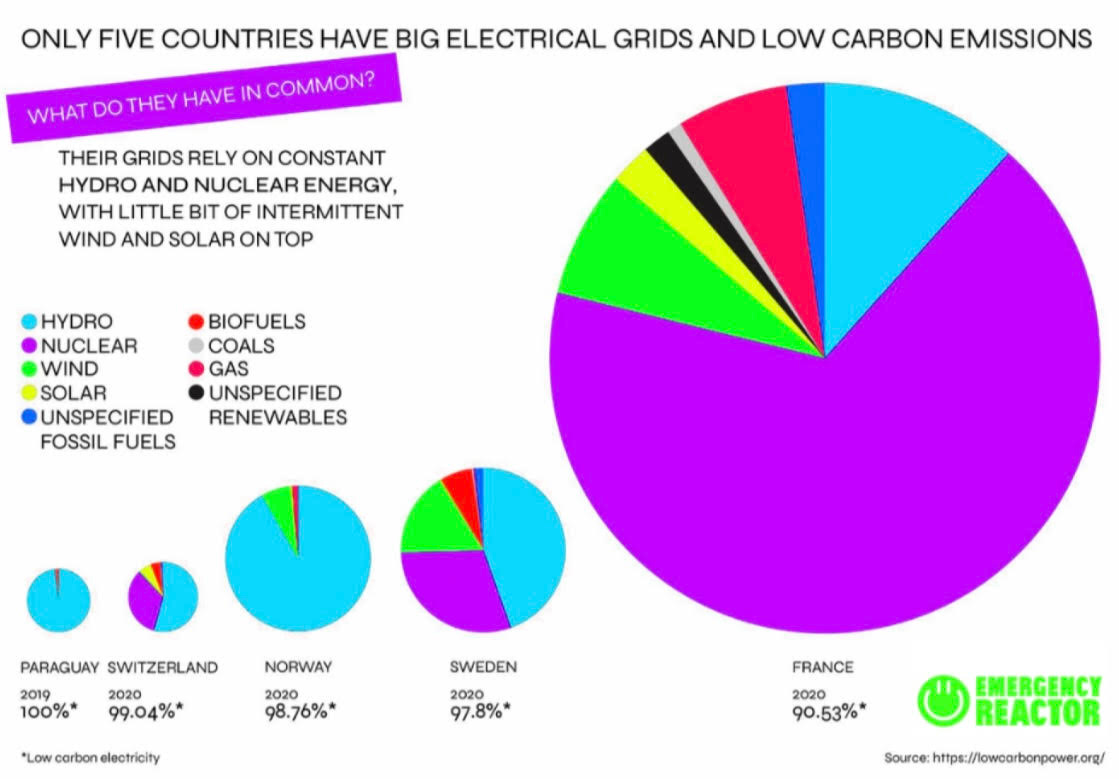
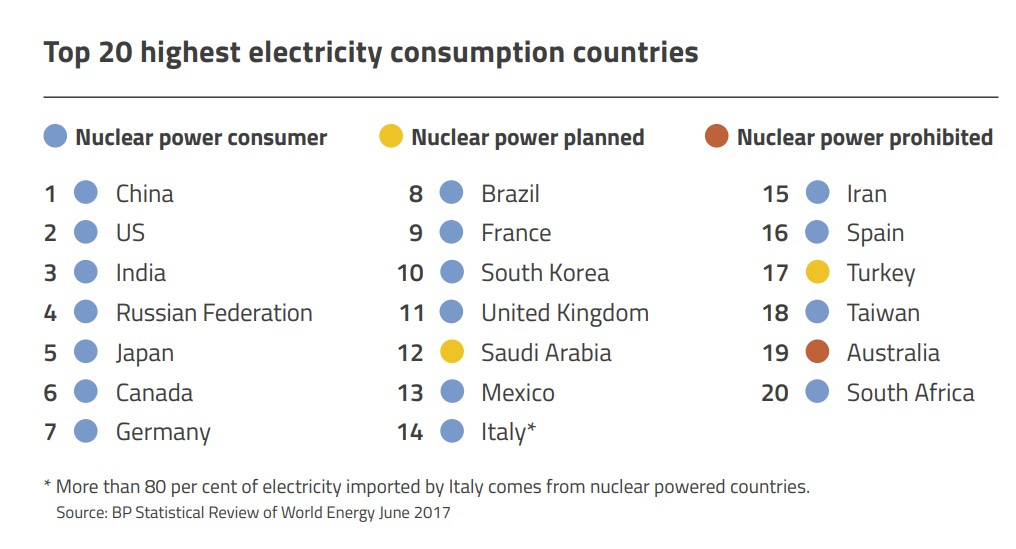
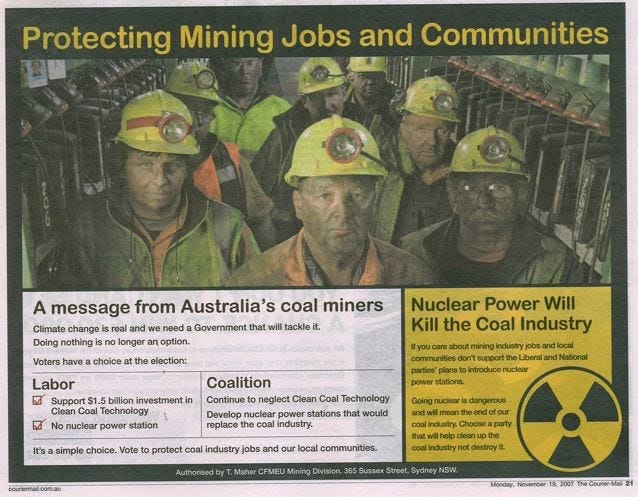
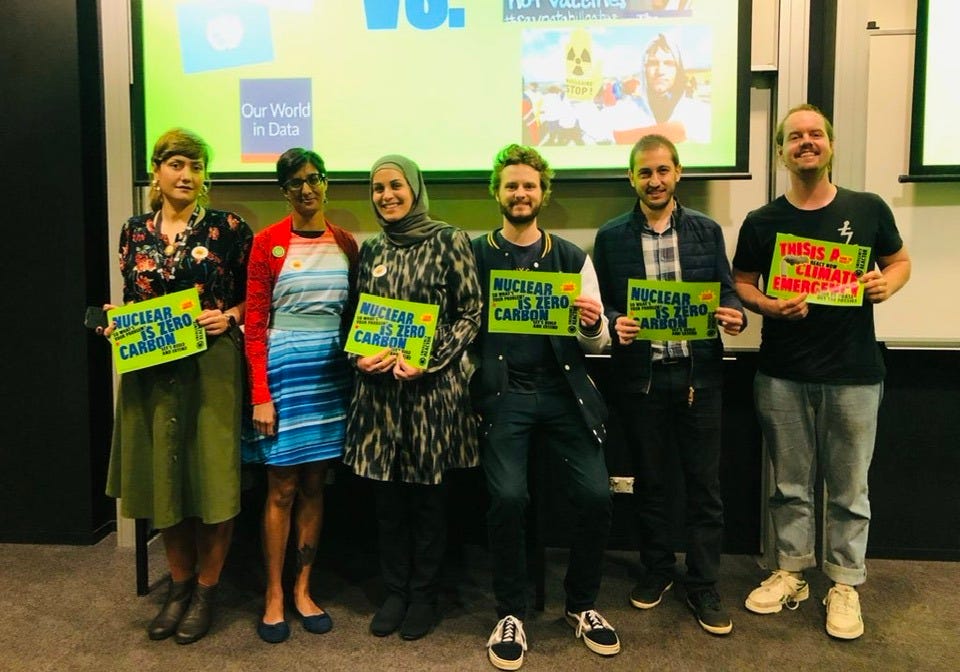
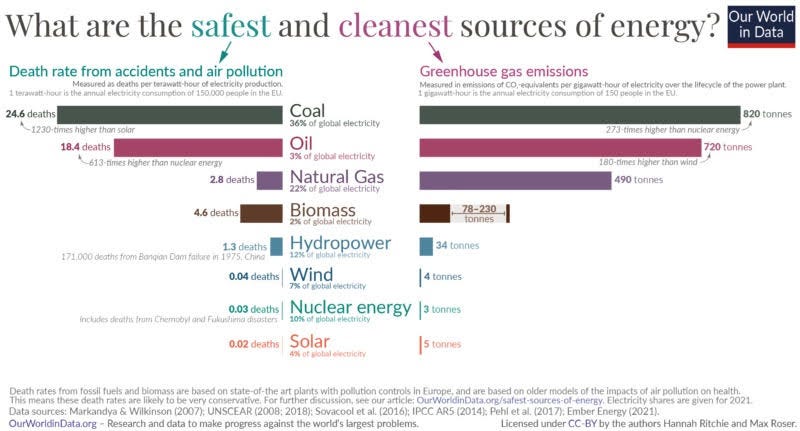

Thank you Zion for this arge overview of the anti-nuclear situation in Australia which O didn’t know before. If this gigantic land turns to nuclear this could change a lot of data around the world. And you should be thanked for that!
Excellent report on your Oz trip! And excellent analysis of the challenges of changing Australia’s attitude to nuclear power.
I’m an Aussie lomg-term resident in Hong Kong where we get one-third of our electricity from Daya Bay Nuclear power station. We could get even more excess nuclear from other plants in China, but don’t do so, again because of the fear-mongering by “Green” groups like Greenpeace. Grrrr…
Back to Oz: I’ve always thought it hugely hypocritical of Australia to mine and export uranium but not to use it ourselves. What? … We don’t mind India using our uranium, but it’s “too dangerous” for us??
I came to the conclusion some years ago that Greenpeace. Etc, are responsible for us having the high carbon dioxide emissions we now have. Were it not for them, we’d be pretty much net zero by now, at least in electricity.
Again, well done Zion Lights! You are a champion. I must try to get my three Oz-based children to read this!
Peter Forsythe
Hong Kong